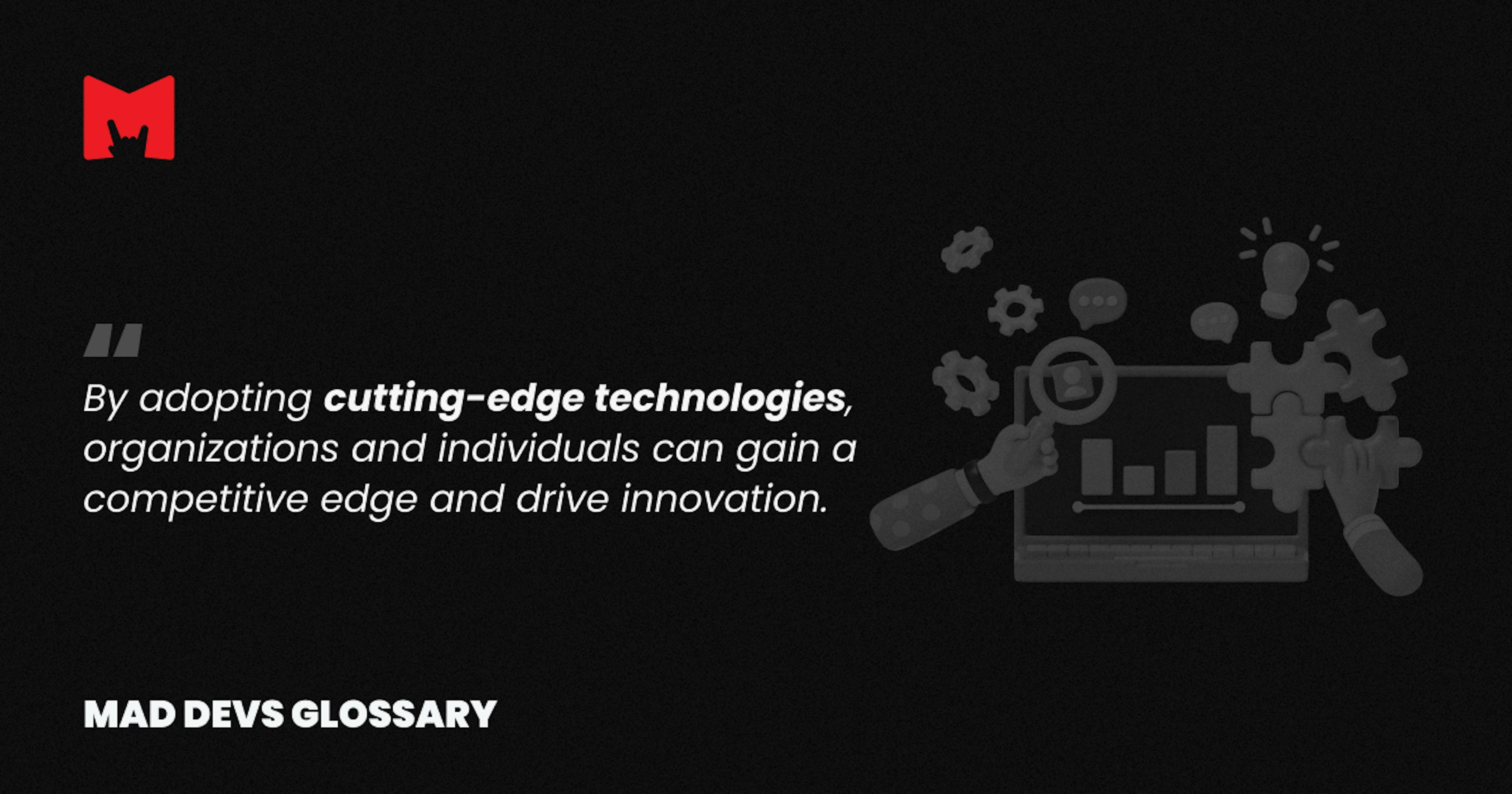
No Bad Questions About Technologies
Definition of Cutting-edge technology
What is cutting-edge technology?
Cutting-edge technology refers to the most advanced and innovative tools, systems, or methods available in a specific field. It represents the forefront of technological development, often incorporating novel concepts and approaches that push the boundaries of what is currently possible.
These technologies are typically characterized by their transformative potential, such as revolutionizing industries, improving efficiency, or creating new opportunities. Examples include:
- Artificial intelligence
- Quantum computing
- Biotechnology advancements

How does cutting-edge technology work?
Cutting-edge technology works by leveraging advanced scientific principles, algorithms, or engineering methods to deliver unprecedented capabilities. Researchers and innovators often integrate emerging trends, such as automation, big data, or machine learning, into products or systems.
Cutting-edge technology examples include artificial intelligence tools that analyze vast datasets to identify patterns and make predictions and quantum computers that use quantum mechanics to perform complex calculations at unparalleled speeds. Individuals involved in the development of cutting-edge technology require a multidisciplinary approach that combines expertise in research, development, and practical implementation. Cutting-edge technologies continuously evolve as breakthroughs are made, driving innovation and setting new benchmarks in their respective fields.
What are popular cutting-edge technologies?
Cutting-edge technologies are reshaping industries through innovation and advanced capabilities. Healthcare, software development, and other areas will benefit from the progress and transformation brought by these technologies becoming available.
Cutting-edge technology in healthcare
- CRISPR gene editing: Enables precise modification of DNA for treating genetic disorders.
- Telemedicine: Provides remote consultations and diagnostics using secure digital platforms.
Cutting-edge software technology
- Quantum computing: Offers immense computational power for solving complex problems.
- Blockchain: Secures and decentralizes data transactions to enhance transparency and security.
Cutting-edge automotive technology
- Autonomous vehicles: Self-driving cars use AI and sensors for navigation and safety.
- Electric vehicles (EVs): Advanced batteries and renewable energy integration power EV innovation.
Cutting-edge manufacturing technology
- 3D printing: Creates complex components with high precision and reduced waste.
- IoT-enabled smart factories: Optimize production processes using real-time data.
Cutting-edge energy technology
- Fusion energy research: Seeks to provide limitless clean energy through nuclear fusion.
- Advanced energy storage: Improves efficiency and scalability of renewable energy systems.
Key Takeaways
- Cutting-edge technology represents the most advanced and innovative tools or systems in a specific field, driving transformation and pushing boundaries.
- These technologies leverage advanced scientific principles and emerging trends like AI, big data, and automation to deliver unprecedented capabilities.
- Examples of cutting-edge technologies include CRISPR in healthcare, quantum computing in IT, autonomous vehicles in automotive, and 3D printing in manufacturing.
- Cutting-edge technologies enable significant advancements across sectors, improving efficiency, fostering innovation, and creating new opportunities.
